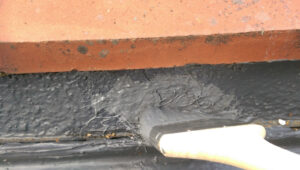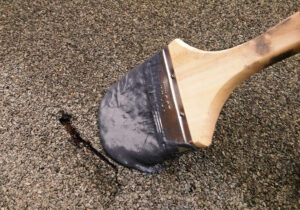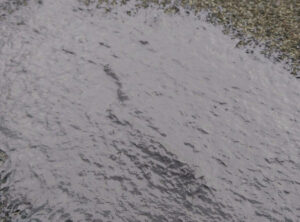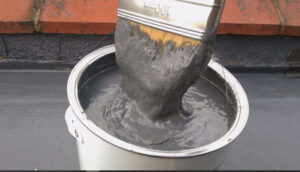How to Prevent & Get Rid of standing water
Standing water on a flat roof

How to get rid of standing water?
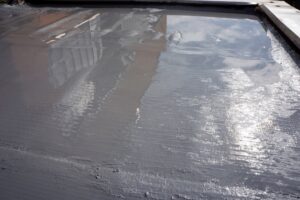
Standing water on a GRP flat roof can be a problem, So how to get rid of standing water? if you don’t find a solution it can lead to leaks, water damage, and other issues.
Here are some ways to get rid of standing water on a flat roof:
- Remove debris: Debris such as leaves, branches, and dirt can prevent water from flowing off the roof. Clear any debris to ensure water can flow freely.
- Install a drainage system: A drainage system, such as a scupper or downspout, can help divert water off the roof. If your roof doesn’t already have a drainage system, consider installing one.
- Improve roof slope: If the roof is not sloped enough to allow water to flow off, you may need to improve the slope by adding tapered insulation or using a roof coating that can provide a slope.
- Repair the roof: If the standing water is caused by a damaged or deteriorated roof, it may need to be repaired or replaced to prevent further damage.
Remove debris:
Debris can accumulate on a flat roof and create blockages that prevent water from draining properly. It’s important to remove any debris from the roof to ensure water can flow freely and prevent the formation of standing water. Depending on the size of the debris, you can either use a broom or a leaf blower to remove it from the roof. If the debris is particularly stubborn, you may need to use a power washer or hire a professional cleaning service to ensure that the roof is thoroughly cleaned. It’s a good idea to schedule regular cleanings to prevent debris from accumulating and causing problems in the future.
Install a drainage system:
Installing a drainage system is an effective way to prevent standing water on a flat roof. A drainage system can help water flow off the roof and into gutters or downspouts, which will carry the water away from the building. Here are some common types of drainage systems:
- Internal Drains: Internal drains are installed in the center of the roof and are connected to a series of pipes that carry water down to a drainage system.
- Gully: Create a gully in the roof deck to allow water to run towards the slope of the roof into the rainwater pipes.
- Roof Coatings: Some roof coatings can create a slope on the roof, which will allow water to drain towards the edges of the roof.
Improve roof slope:
Improving the roof slope is another way to prevent standing water on a flat roof. Here are some methods to improve the slope of a flat roof:
- Tapered Insulation: Tapered insulation is a system of insulation that is designed to create a slope on the roof. The insulation is thicker on one side and thinner on the other, which creates a gradual slope that allows water to flow toward the drains or scuppers.
It’s important to note that changing the slope of a flat roof can be a complex and time-consuming process that should be carried out by a professional roofing contractor.
Repair the roof:
If standing water on a flat roof is caused by a damaged or deteriorated roof, repairing or replacing the roof may be necessary to prevent further damage. Here are some common roof problems that can cause standing water:
- Damaged or missing roof flashing: Roof flashing is a strip of material that is used to cover joints and prevent water from seeping through the roof. If flashing is damaged or missing, water can seep into the roof and cause damage.
- Cracks or holes in the roof membrane: The roof membrane is the outer layer of the roof that is designed to prevent water from penetrating the roof. If there are cracks or holes in the membrane, water can seep into the roof and cause damage.
- Deteriorated roof insulation: Roof insulation is designed to prevent heat loss and provide a barrier against moisture. If the insulation becomes wet or deteriorated, it can lose its insulating properties and cause water to accumulate on the roof.
- Structural damage to the roof: If there is damage to the roof structure, such as rotting or warping, it can prevent water from draining properly.
It’s important to address standing water on a flat roof as soon as possible to prevent damage and avoid potential safety hazards. If you’re unsure about how to address standing water on your flat roof, consider consulting with a professional roofing contractor for assistance.
Find out more about our liquid roof repair



